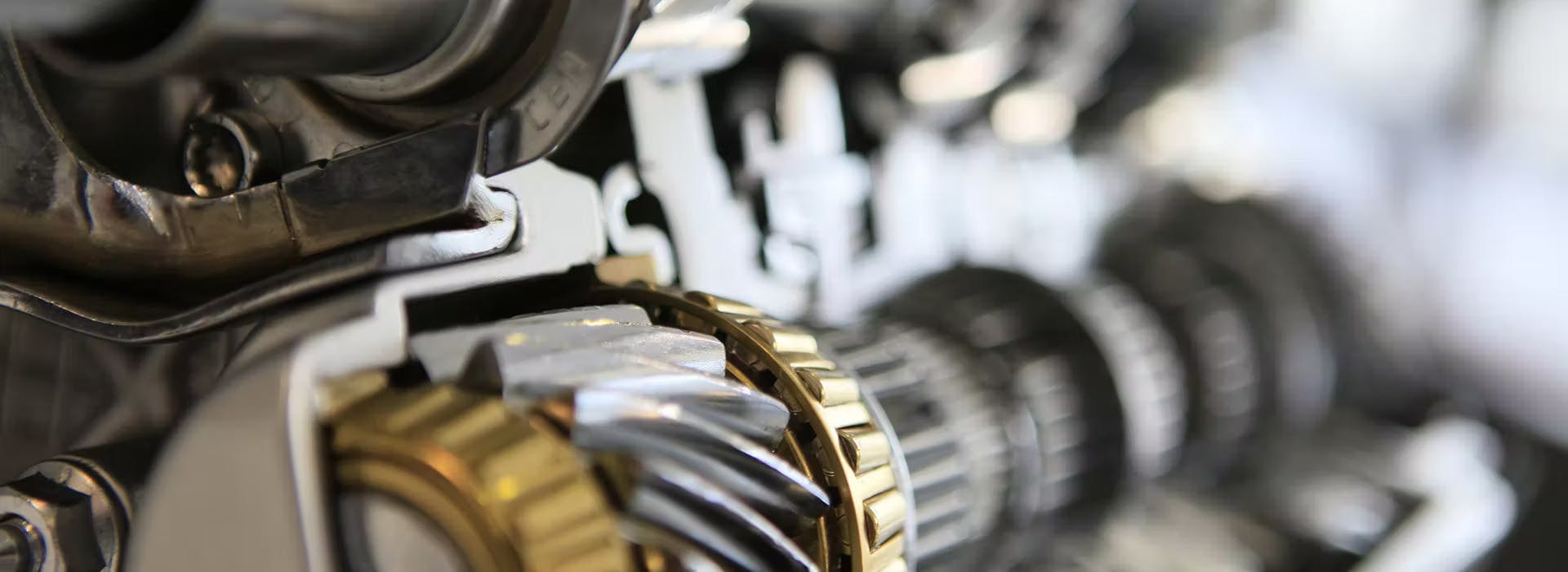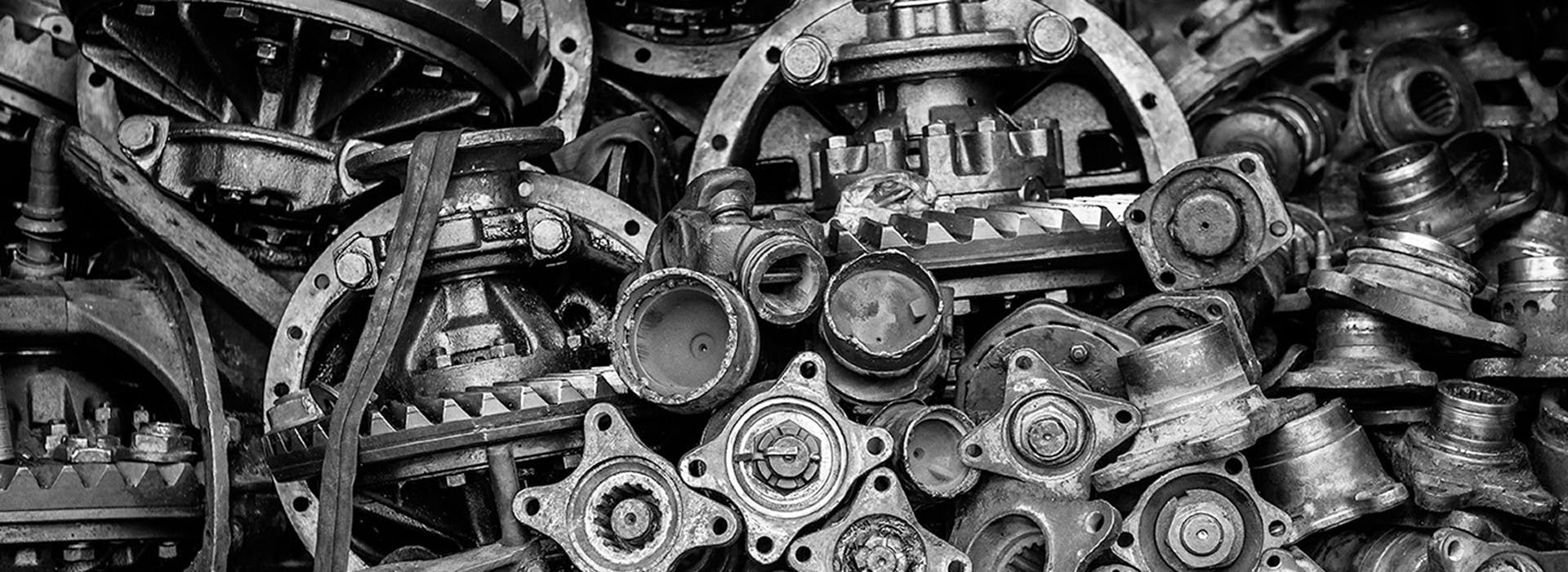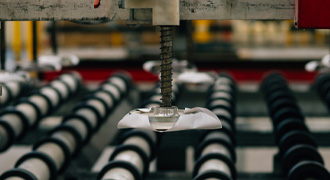- Home >
- Industries >
- Machinery Manufacturing >
-
Industry Report
Machinery Manufacturing
Machinery manufacturing has been a central pillar of industry from the first to the fourth industrial revolution. The increasing digitalisation of manufacturing is changing the way machines are designed and built. Our in-depth industry report outlines the historical and current trends shaping the sector.

1. Insight into machinery manufacturing
Machinery manufacturing has been a central pillar of the industry from the first to the fourth industrial revolution. The increasing digitalisation of manufacturing is changing the way machines are designed and built.
A machine uses power to control movement to perform a task or action, reducing the amount of human work required to complete it. In a typical machine, a mechanism triggers the activation of an actuator, which applies force and movement. Machines can also be mechanical systems, which include computers and sensors to control and monitor output.
The idea for simple machines has been around since the 3rd century, when the Greek philosopher Archimedes discovered the principle of mechanical advantage in the lever. He used this discovery to operate simple equipment using levers, pulleys and screws. Since then, machines have been powered by things as diverse as animals, people, natural forces, chemical, thermal power and electric power.
The machinery industry drove the first industrial revolution. In the early 20th century, automobile and motorcycle machine factories were built. The development of machinery led to great industrial advances in key sectors including the aerospace, automotive, transport and process industries.
Now, almost every workplace uses machinery of some kind – though many consumers aren’t exposed to the equipment that makes the products they use.
A vast industry
Machinery manufacturing encompasses seven major sectors - agriculture, construction and mining machinery, industrial machinery, commercial and service industry machinery, metalworking machinery, ventilation, heating, airconditioning (HVAC) and commercial refrigeration equipment. It also includes engine, turbine and power transmission equipment manufacturing and other general-purpose machinery.
The complex machinery manufacturing process relies on several manufacturing methods including forging, stamping, bending, forming and machining for individual metal parts. The parts are then joined together using techniques like welding and assembling. A machinery manufacturing facility will use a multitude of manufacturing and metal forming methods to make different components of the machine.
A large share of the industry falls into metalworking machinery manufacturing, which makes machinery and tools to form, shape and cut metal. Metal properties make it difficult to form, so specialised grinders, presses and rollers are manufactured in this industry.
A high-value market
The sector is thriving. The US machinery manufacturing industry includes over 20,000 companies, generating a $370 billion combined annual revenue. The industry has some major players, for example Caterpillar Inc, whose 2017 revenue was $45.5 billion.
In the industrial machinery manufacturing sector, the global market was valued at around $115 billion in 2017. According to a report from Global Market Insights, Asia Pacific is a leader in industrial machinery manufacturing, accounting for 40 per cent market share in 2017. Western Europe came in second at 29 per cent and South America smallest with 3 per cent market share.
Shaping and changing
In a 2016 Aberdeen Group survey, it was found that industrial machinery manufacturers are most often asked by their customers to launch products quickly and to produce customised and complex products. Manufacturers are therefore under pressure to build personalised, individual machines under growing time pressures. Small batch sizes of machines, often as small as one, must be built as efficiently and cost-effectively as possible. energy costs.
To cope with changing customer demands and increasing digitalisation, machine manufacturers are adopting new technologies to increase productivity, improve manufacturing and reduce costs. Automation and robotics can improve manufacturing productivity, and also offer the benefit of relocating humans to more skilled and creative roles. Human workers are therefore required to perform more complex tasks than simple machine operation, including programming and maintenance of machine tools.
Machine manufacturers are also benefitting from the growing servitisation trend. The industry is increasingly relying on contractors for security, administrative and warehouse roles. For example, inventory and spares roles are often outsourced, instead using reliable third parties to supply and deliver spare parts when needed, a much simpler process than sourcing them in-house.
”
Manufacturers are turning to the Industrial Internet of Things to help make decisions on how a product should be manufactured.
”
Design
Because machines last for a long time, machinery manufacturers must ensure that they design with obsolescence in mind so the machine can remain functional. Designers can analyse procurement information and avoid opting for parts close to obsolescence. Being strategic about component choice can have a big impact on product lifecycle and ensures the machine is easy to maintain.
Machines are designed using models and simulations, which can test performance, cost, usability and more to ensure the product is reliable and effective. More prototypes are becoming digital, which can speed up the process and allow for simulation and testing in real-time.
As well as designing for obsolescence, machinery manufacturers are designing for digitalisation. Their customers are going through rapid change as we enter Industry 4.0 and are now demanding smart, data-driven equipment able to connect via Bluetooth or the internet to other manufacturing systems. Such machines can be connected from day one, so that breakdowns can be detected remotely and quickly to prevent machine downtime and reduce repair costs.
Working smarter
Machinery manufacturers are working to become more profitable based on data collected from their own operations, by increasing precision and visibility in the supply chain and cutting inventory costs. One way to improve processes is to move from a push-based to a pull-based production system, which helps with demand predictability and increases manufacturers’ ability to respond to customer demands.
Manufacturers are turning to the Industrial Internet of Things (IIoT) to help make decisions on how a product should be manufactured, how downtime can be minimised and how production costs can be lowered.
Collaboration between facility workers can help companies to produce smarter machines, better processes and shorten time-to market. Internationalisation is also benefiting the industry, as manufacturers are learning techniques from other nations, for example German techniques, which are in great demand.
The machine manufacturing industry is working to produce smarter, better, easier to maintain machines, using automated equipment according to information received from the IIoT. This allows machine manufacturers to be more profitable, even at very small batch sizes.

2. Keeping legacy equipment in action
Producing modern machines that integrate with legacy equipment.
Many businesses have started to implement digital technologies to improve their productivity, efficiency and maintenance operations. According to the Digital Transformation Readiness Survey by the Center for Creative Leadership, 72 per cent of respondents have already implemented a number of digital initiatives to improve or adapt their organisation’s products and services. However, few of these organisations have digitalised their entire business.
To replace all machines in an industrial facility with modern alternatives is an investment that not all businesses can afford. A common practice is to start a digitalisation journey by identifying and upgrading just the machines with the potential to add the most value. This way, businesses can start to reap the benefits of digitalisation straight away.
”
Producing modern machines that integrate with legacy equipment.
”
Industry challenge
Upgrading some machines but not others leaves industrial facilities with a mixture of old, traditional equipment and modern systems. While modern systems should provide businesses with advanced capabilities, challenges can arise when they do not integrate well with legacy equipment.
For example, a manufacturing company may invest in a new machine vision system to improve the reliability of its quality assurance processes. However, if the new system does not integrate well with the legacy conveyor system, it is unlikely to add a worthwhile return on investment. Therefore, engineers need new machines that are capable of connecting, interacting and sharing information with older, more traditional equipment already in use.
EU Automation’s solution
Machinery manufacturers can source new, old or reconditioned parts from EU Automation and incorporate them into brand new machines. This will provide customers with machines that will function effectively with their existing equipment, without compromising on advanced capabilities.
Because legacy equipment was built with cyber protection measures that prevent them from accessing data required in a digitalised facility, new machines should include measures to bypass these security features. Software platforms like ThingWorx enable this functionality, by providing a common communication network between Internet of Things-ready machines and legacy systems.
As well as ensuring the machines they produce can integrate with legacy equipment, machinery manufacturers can help their customers to fit their legacy equipment with the components needed to integrate with new machines. These parts can also be sourced from EU Automation.
To find out more about how to provide your customers with machines that will integrate with their existing systems, contact EU Automation.

3. How we can help
”
The idea of the machine originated with Greek philosopher Archimedes who, in the third century BC, studied the mechanical work of a lever. The machines of today are far more complex and require advanced technology and specific skillsets to manufacture.
”
Machinery manufacturers can use an automated rig to transport components to, from and along a production line. Often, these rigs take the form of conveyor belts that are programmed to move at a certain speed. Automated guided vehicles (AGVs) are becoming increasingly popular as another way to transport goods to and from the required points along a production line. However, manufacturers must be careful when increasing automation, as more equipment means more opportunities for breakdown.
Customers who are purchasing a machine often have very specific requirements. For example, in the food and beverage industry, machines must be food-safe. Manufacturers can ensure their machines are food-safe by adding a specific coating to the outside. Customers also expect timely production and delivery of their order. To meet the complex expectations of your customers and maintain your company’s reputation, you must resolve machine breakdowns rapidly to minimise plant downtime.
This is where EU Automation can help. We will source the spare part you need, whether that part is new, reconditioned or no longer manufactured by the original equipment manufacturer (OEM). Compared to other industrial component suppliers, we considerably cut the time taken from the placement of a customer inquiry to the provision of a quote. In fact, we guarantee worldwide delivery in 48 hours or less, which allows you to get your plant back up and running quickly.
It’s important to minimise plant downtime to ensure you meet your customer’s expectations and protect your reputation. Working with an obsolete industrial parts supplier means you can return to production after a machine breakdown, with minimal downtime and costs.

4. The future of machinery
”
In the early 18th century, industry relied on humans using handheld tools to complete work. The invention of machines, such as the spinning jenny and the steam engine, changed manufacturing forever by sparking the first industrial revolution. Machinery manufacturing has developed with each industrial revolution, adapting to changing trends and technologies. As more manufacturers across the globe aim to digitalise their factories, machinery manufacturers must adapt again to meet demand.
”
Connectivity
One way to improve productivity in machine manufacturing is to increase precision and visibility in the supply chain. The Industrial Internet of Things (IIoT) means that physical objects have an intelligent interface that allow them to communicate with other objects, users and environments.
IIoT allows manufacturers to access real-time information about machine processes so they can make the right decisions and improve productivity. Better communication can help improve predictive maintenance, as a connected sensor can quickly detect machine issues, alerting maintenance engineers before downtime occurs.
Digital twinning
Machinery manufacturers should take the time to design with obsolescence in mind because manufacturers want equipment that lasts for a long time. However, designing and prototyping can take up time and resources.
Engineers can use digital twins to optimise machine design and prototyping. The digital twin uses data from sensors located on the physical asset to analyse its efficiency, working condition and real-time status. Manufacturers can simulate ideas, maintenance or new designs using the digital twin, giving the opportunity to test an idea before spending the money and resources.
AR and VR
According to Deloitte, more than 2.7 million baby boomers working in manufacturing will retire in the next ten years, taking their knowledge and skills with them. Manufacturers should look for new technology to help train a new workforce.
Manufacturers should look at how augmented reality (AR) and virtual reality (VR) can bridge the skills gap while optimising processes. VR is an effective way of teaching machine operators about a new piece of equipment on the factory floor. Visualising the inner components of devices allows companies to make detailed maintenance plans. This process is incredibly useful for identifying obsolete components or predicting which parts the original equipment manufacturer will cease to support in the near future.
AR is also useful to digitalise documents and change how workers use information. For example, maintenance engineers can bring up blueprints or manuals on smart eye-wear to help them quickly and efficiently complete a task.

5. Resolving a quality defect
”
Quality in machinery manufacturing is as important as productivity and efficiency. A low-quality machine may have a reduced lifespan or poor function, which will damage your company’s reputation. A quality defect may even be so bad that the machine cannot be sent to a customer at all, resulting in a considerable waste of time, money and resources.
”
- Your quality assurance system is alerting you to a consistently recurring defect on a machine being manufactured on your production line
- The defect means the machines cannot be sold, costing you time and money and wasting resources
- You know the cause is a fault in your equipment because the defect is the same in every product
- You should inspect the product at every stage of the production line to identify where the defect is occurring
- Once you have determined which of your machines is faulty, you must decide how you will replace the component causing the problem
- You could buy an entirely new, advanced machine with top-of-the-range features, but you should consider whether this will integrate with the rest of your plant
- You may want to repurchase the component you had before, but you find it is no longer sold by the original equipment manufacturer (OEM)
- At this point, you should contact EU Automation. We can source new, reconditioned and obsolete parts from global manufacturers.
- We can deliver parts anywhere in the world in under 48 hours
- Once the part arrives, you can quickly install it and return to production
- You can stay in contact with EU Automation to stock spares that you may need in the future, to avoid long periods of downtime in the future
Explore more industries
Here to inspire you.
inspire
inspire
inspire
Get regular updates and real automation insights straight to your inbox.



